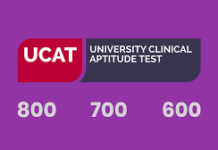Oracle EBS customers must be aware that Oracle has ceased the premier support for EBS 12.1. Enterprises that are still running on EBS 12.1 need to understand that ceasing of support means that you no longer be receiving new updates, fixes, security alerts, data fixes, critical patch updates, new tax, legal, and regulatory updates. Saying otherwise, your EBS will no longer be compliant. In order to enjoy the benefits of continuous innovation, enterprises have the option to upgrade to Oracle EBS 12.2. Upgrading from EBS 12.1 to Oracle EBS 12.2 will ensure that you’ll receive “premier support” till 2030.
By upgrading to version 12.2, you’ll become eligible to receive continuous updates, a principle designed to protect your EBS investment by offering ongoing application and technology updates. Although upgrading to EBS 12.2 offers several benefits, it is a challenging task. In fact, upgrading to R12.2 will be the last difficult upgrade you’ll ever make to future proof your EBS investment.
In this guide, we discuss a comprehensive test focussed EBS 12.2 upgrade strategy that will ease out your upgrade burden while reducing business risks post upgrade.
A standard EBS 12.2 upgrade is divided into following stages.
Functional evaluation: This is the very first stage in which you need to perform a functional evaluation of your existing EBS instance. By reviewing existing configurations, customizations, and enhancements, you can easily identify key process and application issues. Evaluation is very critical since it helps you understand the underlying setup and use of Organization Models, Reporting, Accounting, Worldwide Operations, Governance, Risk Management, and Compliance.
Perform CEMLI: Post functional evaluation, you need to execute CEMLI evaluation. CEMLI stands for Configurations/ Customization, Extension, Modification, Localization and Internationalization, and Integration. Since EBS 12.2 provides you an opportunity to replace unnecessary customizations with built-in functionality, CEMLI evaluation will help the upgrade project team to identify the areas that need focus during testing.
Technical upgrade: This is the most critical step in which upgrade of your clone (or shadow) instance of your production is performed.
First round of regression testing: Once the upgrade is complete, you need to execute the first round of regression testing to identify issues. This round of regression testing verifies any setup changes. You need to engage the business users since they’re the ones who know your business processes best.
CEMLI Retrofitment: During the upgrade process, any customization is considered as a custom application. All custom forms, descriptive flexfields, and customized reports need to be tested exhaustively to ensure upgrade hasn’t impacted them.
User acceptance testing: This is the final round of testing that is executed to ensure Oracle application’s functionality, business processes and data.
As you now know the best practices for Oracle EBS 12.2 upgrade, you can understand the importance of testing. Since manual testing is an error-prone, and accurate, and time consuming process, you need to bring in test automation. With test automation, you can alleviate the burden of business users by eliminating the need for exhaustive user involvement in the testing cycles.
However, the test automation platform should incorporate following features
No-code: Since business users are the ones who validate functionality and participate in multiple rounds of testing, it is recommended that you should opt for a no-code automation platform. Since business users aren’t programmers, zero-code automation ensures that they don’t have to struggle with test automation platforms.
Pre-built accelerators: Writing test cases from scratch can be very time consuming. Oracle EBS test automation platforms like Opkey come with pre-built accelerators to save your initial setup time by 70%.
Test case retrofitment: Test cases which are used for CEMLI evaluation need to be executed post upgrade. However, these scripts need to be modified due to changes in the fields across the forms and other functionality changes that result from the upgrade. So, opt for a test automation platform that offers a drag-drop interface to retrofit those test cases. It allows business users and manual testers to retrofit the test cases with minimal effort.
End-to-end testing: Opt for a test automation platform that supports multiple technology stack to offer end-to-end testing in order to ensure adequate risk coverage during upgrade.
Write and Win: Participate in Creative writing Contest & International Essay Contest and win fabulous prizes.
















